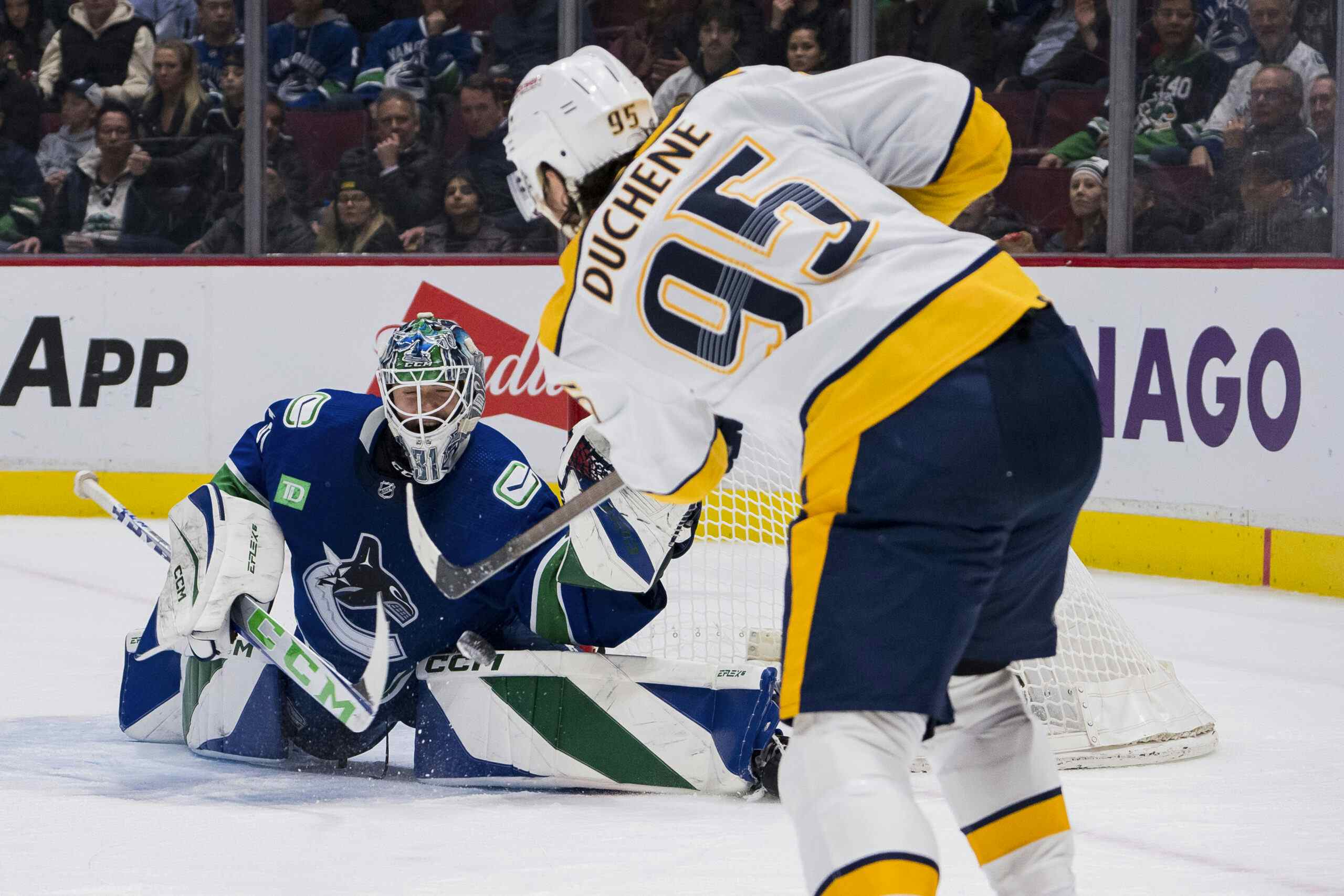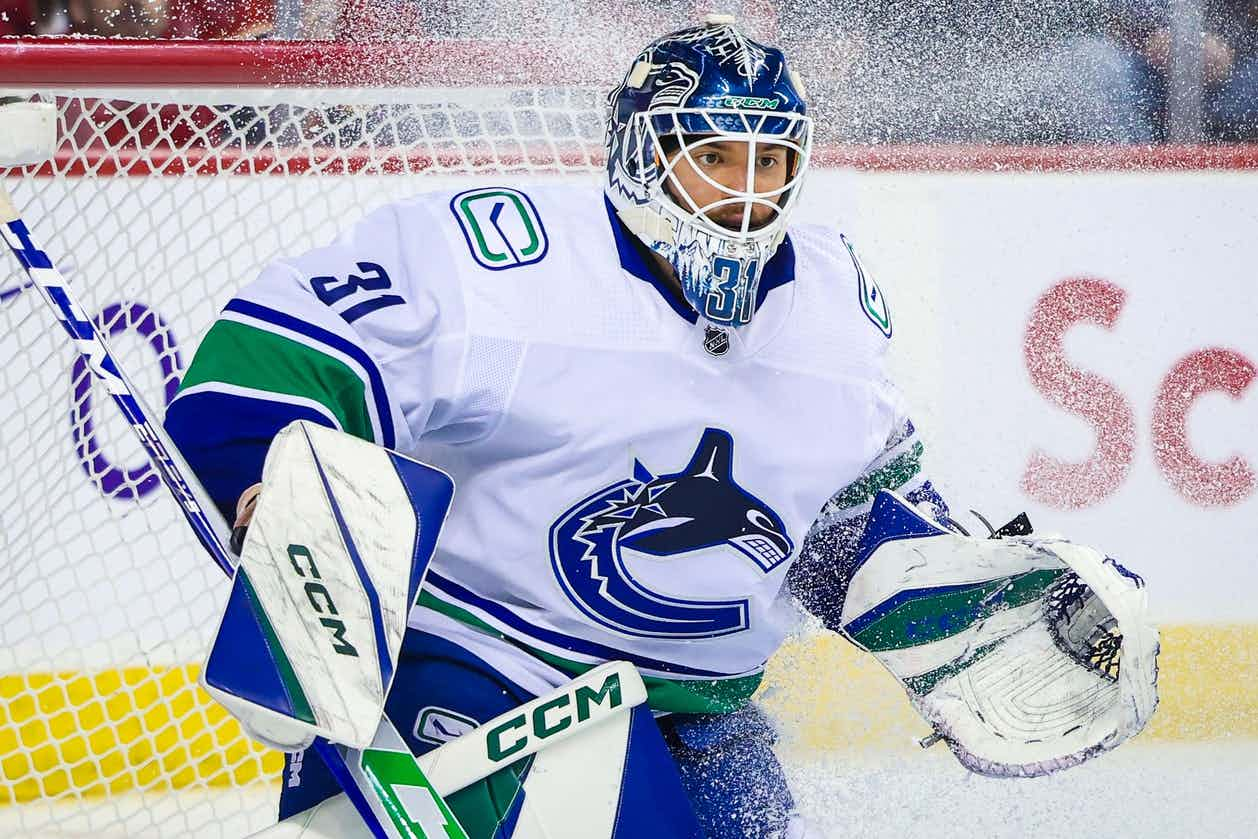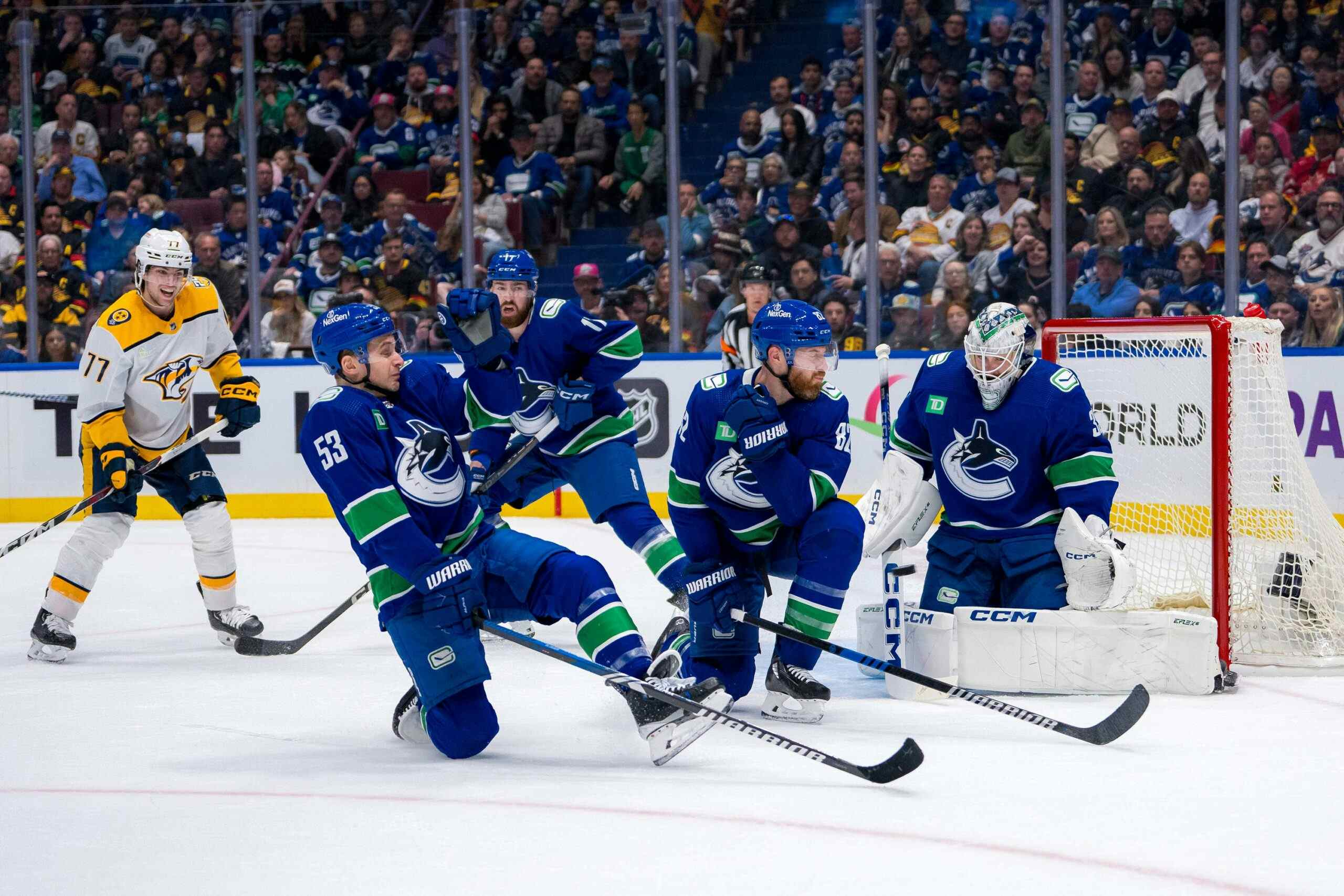CanucksArmy Year In Review: Ryan Spooner

Heading into the 2019/20 season—and with several players still without contracts—Ryan Spooner currently sits with the seventh-highest cap hit on the Vancouver Canucks roster. $3.1 million is an awful lot for a player who posted three goals and six points for three NHL franchises across 52 games in 2018/19—and it could be worse! Without the retention on his contract leaving $900K of his cap hit on the New York Rangers’ books, he’d be sitting at $4 million—good enough for fifth on the Canucks.
What does all that mean? It means that Ryan Spooner is a player worth discussing as we take this offseason opportunity to look over the entire roster. Even if Spooner isn’t expressly in the team’s immediate future plans—and there’s a very good chance he doesn’t even crack Vancouver’s roster in 2019/20—his contract will have an impact on the Canucks’ upcoming personnel moves.
That leaves us with a number of questions that need to be answered about Spooner—primarily, what happened to him, and is there any chance of him rebounding to his former glory?
Past Lives
As such, we must start this Year In Review a few years into the past. Spooner signed his current contract just last offseason, after having been traded from the Bruins to the Rangers following several productive seasons with Boston.

From NHL.com
Spooner broke out in a big way in 2015/16, racking up an impressive 49 points in 80 games for the Bruins in his first full season. His production dipped a bit the next year, down to 39 points in 78 games—but it popped right back up again in 2017/18.
That year, Spooner found himself on pace for career numbers with 25 points in 39 games for the Bruins before being sent to New York in the Rick Nash trade. Upon arriving in the Big Apple, Spooner went on his greatest offensive tear ever—picking up an impressive 16 points in 20 games for the decidedly less-than-impressive Rangers.
He signed his two-year at $4 million per contract shortly thereafter—and then Spooner’s play fell off the proverbial cliff.
Penciled into an offensive role to start the 2018/19 season, Spooner fell flat with just one goal and one assist in his first 16 games—a period that included multiple healthy scratches.
He was then flipped to Edmonton in a one-for-one trade for the similarly-struggling Ryan Strome. The eldest Strome brother went on to post 33 points in 63 games for the Rangers—whereas Spooner potted three points across 25 games for the Oilers. It’s not hard to see who won the trade.
After failing to succeed lining up with both Connor McDavid and Leon Draisaitl, the Edmonton brass saw no choice but to waive Spooner. He went unclaimed, but at least managed to rekindle his offense somewhat by putting up six points in seven games for the Bakersfield Condors.
Then, the Vancouver Canucks came calling.
Coming To Vancouver
The Vancouver Canucks found themselves in a similar situation to the Oilers—in possession of a high-priced player whose offense had plummeted into non-existence like DB Cooper. Like Spooner, Sam Gagner had signed a big contract after an offensive breakout and turned it into an offensive breakdown. Both players were toiling away in the AHL when Edmonton and Vancouver decided to give each a fresh start and swap them.
In doing so, the Canucks saved a grand total of $50K on the salary cap, but they at least gained a player who they thought was more worthy of a shot at NHL redemption. Given the results, it’s probably fair to call this one a swing-and-a-miss.
Gagner, for the record, went on to score five goals and five assists across the Oilers last 25 games—respectable, if unspectacular, numbers.
Spooner, on the other hand, did not score a goal in his eleven games with the Canucks—and only added four assists to that total. But a player’s basic statline can only say so much, so now it’s time to dive deeper to determine just how poorly Spooner played with the Canucks.
Spoon-Fed Stats
Let it not be said that Ryan Spooner didn’t receive a fair opportunity with the Vancouver Canucks. Despite his sub-par offensive returns—and even worse performance on the defensive side of things, as we’ll get to in a moment—Spooner still benefitted from ice-time that could probably be described as generous.

From NHL.com
Spooner’s average ice-time of 12:18 per game may not sound all that impressive, but it’s good enough for the 13th-highest average on the team among skaters who dressed for at least 10 games. Put further into perspective, Spooner averaged just five seconds less per game than Nikolay Goldobin and ten seconds more than Sven Baertschi.
That total also included an average of 1:19 per game on the powerplay, more than names like Jake Virtanen and Troy Stecher received.
Spooner’s time with the Canucks also saw him lining up primarily with other players of an offensive bent—most typically Adam Gaudette and Josh Leivo, but also Bo Horvat and Elias Pettersson on occasion.

Spooner also received one of the most favourable Zone-Start Ratios on the entire roster, as well as a relatively low Quality of Competition.

From Corsica.Hockey
Despite that generous deployment, Spooner’s possession numbers were among the worst on the team—not a great indicator of a player making the most of their ample offensive opportunities.

From Hockey-Reference.com
As bad as the situation was for Spooner in his opponent’s end of the rink, he was even worse off in the defensive zone. Though 11 games is admittedly a small sample size, the Canucks allowed shots at their own net at a rate 40% above that of the league average with Spooner on the ice—compared to just 5% above without him.
From HockeyViz.com
These numbers wouldn’t be acceptable even if Spooner was placed into a defense-heavy role—but they’re even worse in the context of his actual deployment. This defensive weakness might be considered more forgivable if it were balanced out with reasonable offensive production—but that’s also the opposite of the truth.
What Happened—And Can It Unhappen?
To figure out why Ryan Spooner’s offensive output has gone kaput, it makes sense to first check whether or not his previous scoring heights were truly legitimate.
An artificially high Shooting Percentage is a traditional marker of a player scoring above their means—and benefitting largely from luck—and that certainly seems to be the case with Spooner, who shot well above his career average while playing for both Boston and New York in 2017/18.

From Hockey-Reference.com
In 2018/19, Spooner’s Shooting Percentage came crashing back down to his career average, and the results were pretty clear. Beyond that, Spooner was the beneficiary of some talented linemates and extraordinarily sheltered minutes playing behind Patrice Bergeron in Boston—but has stopped receiving such generous deployment as he’s grown older and his defensive miscues have become less forgivable.
In other words, Spooner’s offensive totals might rebound if he starts playing for a coach that treats him with all the same patience he received as a much younger player—but that still wouldn’t result in him being an overall effective NHLer.
It’s also not very likely to occur, and even less so with Canucks’ head coach Travis Green.
Conclusion
Ryan Spooner enters the 2019/20 season as exactly what the Canucks thought they were acquiring when they flipped Sam Gagner for him—a cap dump.
If they cannot find a suitor for Spooner’s services before the season starts—and, at this point, that looks pretty unlikely—expect Spooner to start the year with Utica. Don’t be too surprised if he stays there for the entirety of 2020, either—this is not a player primed for a rebound campaign.
Read also: Analyzing the Canucks cap situation heading into free agency
Recent articles from Stephan Roget





